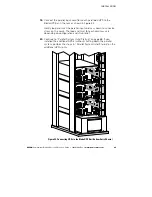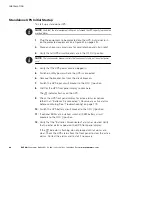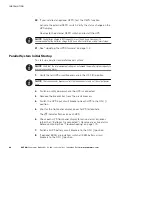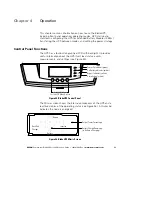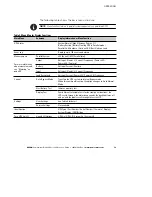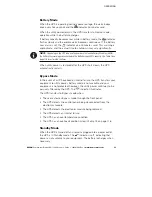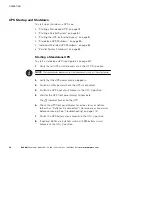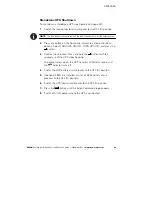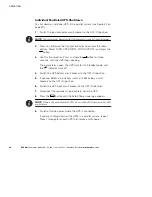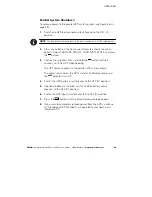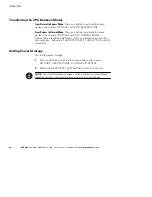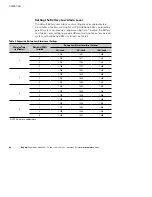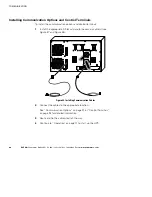
OPERATION
EATON
Powerware
®
BladeUPS
®
(12 kVA) User's Guide
S
164201649 Rev 3
www.powerware.com
76
Table 4. User Settings (continued)
Default Setting
Available Settings
Description
Site Wiring Fault Notice
[Enabled] [Disabled]
Enabled
Input Range
[Standard] [Reduced]*
Use this setting to select the Standard curve
or the Reduced curve for the output voltage
range (see Table 13 on page 116). The
Reduced curve is similar to the Information
Technology Industry Council (ITIC) curve.
Standard
* The choice of Standard or
Reduced is available on the
BladeUPS 12 model only. The
BladeUPS 12i model by default
uses the Reduced curve as its
Standard setting.
Reset Custom Event Settings
0 through 32
Total: 0/32
REPO Configuration
[Enabled][Disabled]
Enabled
Operating Modes
The BladeUPS front panel indicates the UPS status through the UPS
indicators. Figure 45 on page 71 shows the UPS front panel indicators
and controls.
Normal Mode
During Normal mode, the
indicator illuminates solid and the UPS is
powered from the utility. The UPS monitors and charges the batteries as
needed and provides filtered power protection to your equipment.
By default, the BladeUPS operates on a High Efficiency setting that
minimizes heat contribution to the rack environment. The system bypass
input directly supplies the system output with three-phase AC power,
and the UPS stands ready to automatically transfer to double-conversion
(Standard) operation as needed. The battery recharges when necessary.
If the input line exceeds normal operating range, the UPS transfers to
Standard operation to produce a regulated output voltage. When the
input line returns to normal operating range, the UPS returns to High
Efficiency operation.
You can change the default High Efficiency setting to Standard from the
front panel. The Standard setting disables the High Efficiency feature for
a maximum of 60 minutes. See “User Settings” on page 74.




